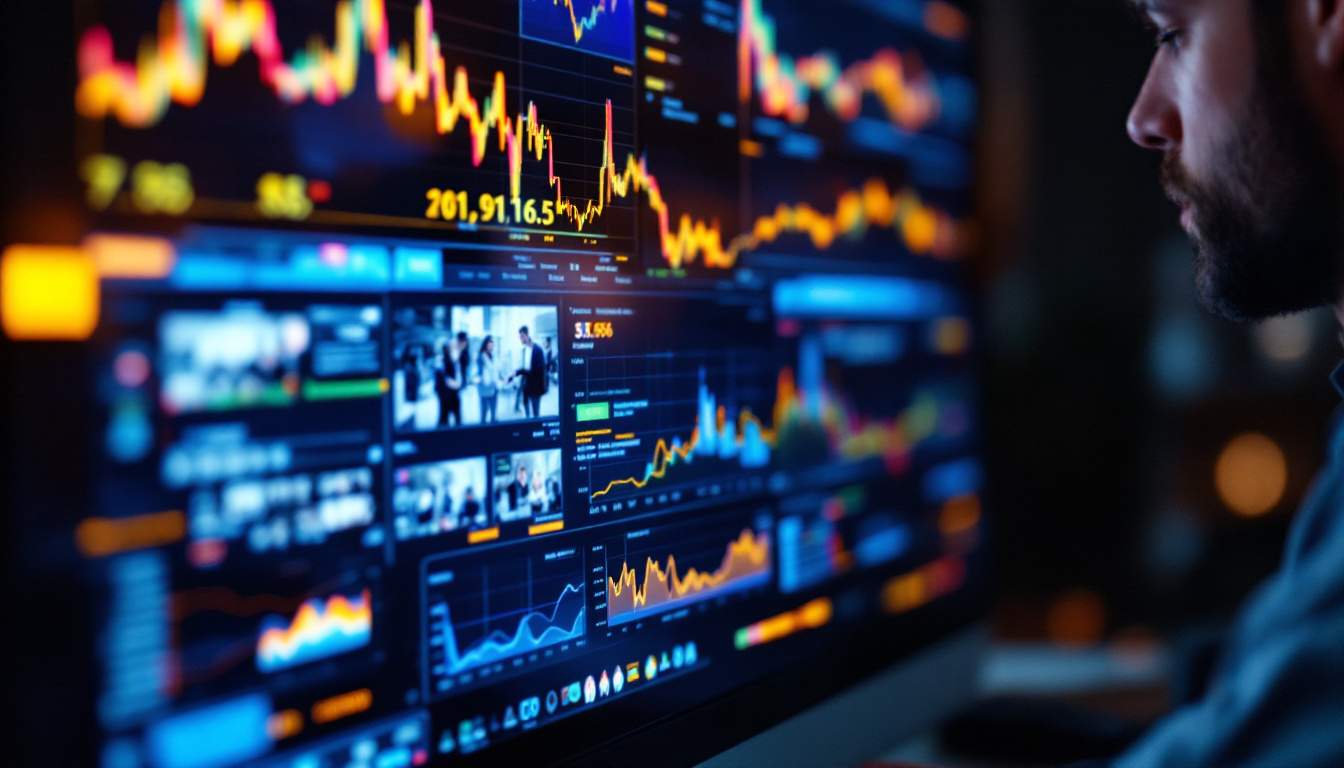Video Indexing: AI Video Analytics Explained
Video indexing is a critical component of AI video analytics. It involves the process of analyzing video content, extracting meaningful information, and organizing it in a way that makes it easily searchable and accessible. This process is powered by artificial intelligence (AI) technologies, which can process and interpret visual data at a scale and speed that would be impossible for humans.
AI video analytics and video indexing have revolutionized the way we interact with video content. From surveillance systems to social media platforms, these technologies are being used to enhance security, improve user experience, and generate valuable insights from video data. In this glossary entry, we will delve deep into the world of video indexing and AI video analytics, exploring their key concepts, technologies, applications, and future trends.
Understanding Video Indexing
Video indexing is the process of assigning identifiers or 'indexes' to specific parts of a video. These indexes serve as markers that can be used to locate specific scenes, objects, or events within the video. The goal of video indexing is to make video content more navigable and searchable, similar to how a book index helps readers find specific information within a text.

Traditional video indexing methods involve manual tagging and annotation, which are time-consuming and prone to human error. With the advent of AI and machine learning technologies, video indexing has become more efficient and accurate. AI can automatically analyze video content, identify key elements, and generate indexes based on predefined criteria.
Types of Video Indexing
There are several types of video indexing, each with its own set of techniques and applications. Temporal indexing, for instance, involves marking specific time points or intervals within a video. This type of indexing is commonly used in sports broadcasting to highlight key moments of a game.
Spatial indexing, on the other hand, focuses on identifying and marking specific locations or objects within a video frame. This type of indexing is often used in surveillance systems to track the movement of people or vehicles. Semantic indexing, meanwhile, involves tagging video content based on its meaning or context. This type of indexing is particularly useful in video search engines and recommendation systems.
Video Indexing Techniques
Video indexing techniques can be broadly categorized into content-based and metadata-based techniques. Content-based indexing involves analyzing the actual visual and auditory content of a video, such as colors, shapes, textures, sounds, and speech. This technique often uses AI technologies like image recognition and speech recognition to extract meaningful information from the video content.
Metadata-based indexing, on the other hand, relies on external information associated with the video, such as titles, descriptions, tags, and user-generated annotations. While this technique does not require AI technologies, it can benefit from them. For example, AI can be used to automatically generate metadata or to analyze user-generated annotations for sentiment analysis or trend detection.
AI Video Analytics
AI video analytics is the application of artificial intelligence technologies to analyze video content. It involves the use of machine learning algorithms to automatically detect and classify objects, events, and behaviors in video data. AI video analytics can process large volumes of video data in real-time, making it a powerful tool for surveillance, security, and content management.

The key to AI video analytics is the ability of AI to 'understand' visual data. This involves complex processes such as object detection, object recognition, scene understanding, and behavior analysis. These processes require sophisticated AI models and algorithms, as well as large amounts of training data to ensure accuracy and reliability.
Key Concepts in AI Video Analytics
There are several key concepts in AI video analytics that are crucial to understanding how it works. Object detection is the process of identifying and locating objects within a video frame. This involves distinguishing the object from the background and determining its position and size. Object recognition, on the other hand, involves identifying the type or class of the detected object, such as whether it is a person, a car, or a dog.
Scene understanding is the process of interpreting the overall context of a video scene. This involves recognizing the relationships between different objects, understanding the layout of the scene, and inferring the actions or events taking place. Behavior analysis, meanwhile, involves identifying patterns or anomalies in the behavior of objects or individuals within a video. This can be used to detect suspicious activity in surveillance videos or to analyze user engagement in online videos.
AI Video Analytics Techniques
AI video analytics techniques can be categorized into supervised learning, unsupervised learning, and reinforcement learning. Supervised learning involves training an AI model with labeled data, where the correct answers are already known. This is commonly used in object detection and recognition, where the AI model is trained to recognize specific types of objects based on labeled examples.
Unsupervised learning, on the other hand, involves training an AI model with unlabeled data. The AI model is left to find patterns or structures in the data on its own. This is often used in anomaly detection, where the AI model is trained to detect unusual or suspicious behavior without any prior examples. Reinforcement learning, meanwhile, involves training an AI model through trial and error, where the model learns to make decisions based on rewards and punishments. This is often used in video game AI and robotic control systems.
Applications of Video Indexing and AI Video Analytics
Video indexing and AI video analytics have a wide range of applications across various industries. In the media and entertainment industry, these technologies are used to manage and organize large video libraries, improve video search and recommendation systems, and analyze viewer behavior for content optimization.

In the security and surveillance industry, they are used to monitor video feeds in real-time, detect suspicious activity, and automate incident reporting. In the retail industry, they are used to analyze customer behavior, optimize store layout, and improve loss prevention strategies. In the healthcare industry, they are used to monitor patient behavior, detect falls or other incidents, and assist in diagnosis and treatment.
Future Trends in Video Indexing and AI Video Analytics
The field of video indexing and AI video analytics is constantly evolving, with new technologies and applications emerging all the time. One of the key trends in this field is the increasing use of deep learning, a type of machine learning that uses neural networks with many layers to model complex patterns in data. Deep learning has shown great promise in improving the accuracy and efficiency of video analysis, particularly in areas like object recognition and scene understanding.
Another trend is the integration of video analytics with other types of data analytics, such as text analytics and social media analytics. This allows for a more holistic analysis of video content, taking into account not only the visual and auditory content of the video, but also the surrounding context and user interactions. This can provide more accurate and insightful results, particularly in areas like sentiment analysis and trend detection.
Finally, there is a growing focus on privacy and ethical considerations in video analytics. As these technologies become more prevalent and powerful, there is a need to ensure that they are used responsibly and that they respect individuals' privacy rights. This involves issues like consent, data security, and algorithmic bias, which are becoming increasingly important in the field of AI and machine learning.


